
Webinars continue to be a hot lead generation tool. According to DGR’s 2015 Content Preferences Survey, webinars remain among the top three types of content that buyers use to research purchases, with 75% saying they have viewed a webinar in the past 12 months.
Webinars are also one of the most productive content types when it comes to generating leads for B2B marketers. Approximately two-thirds (66%) of B2B marketers rank webinars as effective, according to the 2016 Benchmarks, Budgets, and Trends — North America report from the Content Marketing Institute and MarketingProfs. Webinars rank second to in-person events, which were cited as useful by 75% of marketers.
B2B buyers also are highly engaged with webinar content, as 44% of DGR survey respondents said they spend 30 or more minutes on a webinar. Tools such as audience polling and quizzes are helping to hold attendees’ interest. In addition, forward-thinking marketers are sharing the webinar material ahead of the presentation to spark more lively and thoughtful discussions.
While webinars have historically been a lead generation workhorse at the top of the funnel, more marketers are deploying this content type throughout the buyer’s journey. They are using webinars for mid- and late-stage sales conversations, as well as post-sale activities such as onboarding new customers or rolling out a new product feature.
“We’re seeing a lot of people shaking up the webinar format, using this highly effective lead generation tool at all stages of the customer lifecycle, especially in the middle and the bottom of the funnel and even customer onboarding and ongoing training,” said Alissa Dettelbach, Marketing Manager of Demand Generation for PGi, a vendor of solutions for web, video and audio conferencing, calendar management, webcasting, project management and sales productivity.
Tailoring The Experience To The Buyer And Stage
Marketers need a webinar strategy that is specific to the buyer’s journey through the funnel, according to David Lewis, CEO of DemandGen International. “Your buyer’s journey should be used to provide a roadmap of the topics and issues that a successful webinar strategy will cover.”
Lewis said some webinar content is most appropriate for buyers in the early stage of the journey, while other types of content are most effective in the mid- to late-stage. He broke it down as follows:

Early-stage webinars should focus on common pain-points and hot-button issues;

Mid- to late-stage content should explain key product features and provide examples of how similar customers have achieved ROI; and

At the customer onboarding stage, webinars should enhance product adoption and satisfaction.
While webinars have to be adjusted to match the buying stage, they also have to be targeted at different stakeholders in the decision-making process. It is important to match the tone of the presentation and the speaker to the webinar audience, said SiriusDecisions’ Research Director Julian Archer.
“At the top of the funnel, the tone of the webinar should be more educational,” Archer said. “You may want to have the presenter answer questions via chat. The idea is to position the presenter as a thought leader and instilled confidence in the audience.”
At the next stage of the buyer’s journey, the presentation should focus on offering solutions, Archer explained. “The tone and content at this stage is completely different. You want to go beyond just educating and start talking about the consequences of not addressing the problem. It can help to bring in customers as this stage.”
At the third phase, there should be more direct exchanges between presenters and participants since buyers are close to a decision. “The audience will be smaller, but there should be ample opportunities to ask questions and the webinar should be far more interactive,” Archer said.
Archer's general best practices include the following:
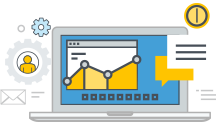
Don’t try to cram everything about a topic into one webinar;
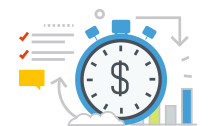
Choose a presenter who is not only knowledgeable about a topic, but can engage the audience;
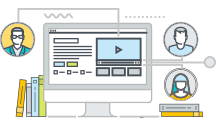
Limit the webinar to 30-40 minutes; and

Maximize social media and influencers.
It is also important to consider your audience when crafting webinar content. You should present a different webinar to the C-suite than to end-users, according to Justin Gray, CEO of LeadMD.
“There are stages of the buying cycle where you might be stuck at the manager or director level, but need to have the CMO on board to drive the process further, and webinars can help move the deal to the next stage. However, you have to be cognizant that your webinar to the C-suite has to take a different approach.”
Engagement And Relevant Follow-Up Remain Challenges
Despite the popularity of webinars, marketers continue to face drop-off rates that can be as high as 80%.
“[High drop-off rates] are the biggest pain that our clients come to us to help address,” said Lorena Fortuna, Client Success Specialist for Televerde. “It is easy to sign up for a webinar [and] then get pulled into another meeting if the content or the speaker is not compelling.”
Fortuna noted that high drop-off rates make follow-up especially important. “Offer a link to [on-demand] content and additional educational resources.”
Interactive tools such as polls, surveys and other interactive elements can help overcome some engagement challenges.
“Polls and gamification are great ways to grab and keep an audience’s attention,” DemandGen’s Lewis said. “Consider using polls to solicit real-time insights about the audience’s experience with a topic or gauge their opinion. A highly engaged audience is more likely to attend future webinars and ultimately has a greater propensity to buy your product.”
Promotion of the webinar event can also be a challenge, observers noted, as marketers struggle to get noticed in the overflowing inboxes of potential attendees.
“Instead of just sending a series of invite emails, consider targeting the same audience through social outlets such as LinkedIn and Facebook ads, as well as online display,” said Lewis.
While most marketers use digital and email campaigns as primary tactics to drive registrations, telephone outreach makes the invitation more personal and conveys a sense of urgency. While it is not always feasible, telephone invitations work best for more narrow groups. “Tele-registration is fundamental to a program with a very specific target audience,” said Fortuna.
PGi’s Dettelbach suggested using a combination of social media and blog posts to overcome registration challenges.
“LinkedIn has been a good channel for us, and Twitter is good for creating that buzz, getting people to follow the hashtag and get excited about the event,” Dettelbach said. “You can [also] use social media to send people to a longer blog post about what they’ll learn on the webinar.”
Metrics Are Key To Future Success
Going forward, marketers will increasingly rely on data to improve their webinar performance, experts noted. “Data analysis is absolutely key to ensuring webinar success,” said Dettelbach.
Savvy marketers are going beyond the standard metrics such as registrant rate, attendee rate and attendee-to-registered rate, Detelbach explained. “Engagement and interactivity metrics can measure the success of your webinar. It is important to track who asks questions and who participates in polls.”
Lewis noted that marketing automation and CRM systems are important tools for tracking webinar success. He said webinar metrics typically fall into four categories:
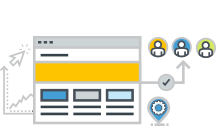
Standard conversion metrics, such as the number of people who view a landing page vs. register for the event;
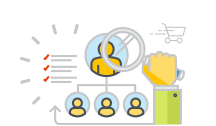
Audience fit metrics, which examine the percentage of webinar attendees that match your ideal buyer profile;
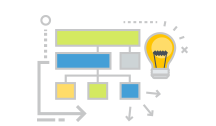
Funnel acceleration metrics, which measure the percentage of attendees that progress deeper into the funnel after the webinar; and

Opportunities and revenues metrics, which track the opportunities and revenue generated from a webinar’s attendees.
As marketers continue to collect and analyze more data, they will be able to engage prospects with relevant content and test new approaches, Dettelbach noted.
“We see people mixing it up by including multiple speakers and recorded customer interviews as part of their presentations, for example,” Dettelbach said. “It is always good to switch things up, as you never know what is going to capture someone’s attention. A greater focus on data helps marketers have more confidence in trying new formats, as they can get a clearer picture of what is working.”
Promotion Tips To Exceed Your Webinar Attendance Goals
Webinars are a great way to generate leads, launch products and interact with prospects. Yet, when it comes to attendance, less than half of those who register actually join most webinars. The point is that regardless of how great the content is in your webinar or webcast, it doesn’t have much meaning if no one’s attending.
There are plenty of effective ways to promote your event and boost your attendance rate. Below are a few simple and effective ways to make sure you not only make people aware of your webinar or webcast, but you get them excited to attend:

Landing page: The page should have a preview of the webinar’s benefits, accompanied by a registration form. Consider using bullet points for three things attendees will learn for easy reading, and make sure you keep the registration form short and to the point.

Website: Promote the landing page on the high-traffic areas of your website to maximize exposure.
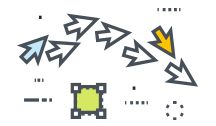
Paid Advertising: Pay-per-click ads and paid social media promotion can help get the word out about your event at a price that you control. The ads should be clean and have a clear call-to-action about registration.

Social media: Consider LinkedIn, Twitter and Facebook and leverage each of these platforms to generate excitement and buzz prior to your event. You can also continue the discussion online during and after your webinar or webcast by using hashtags specific to your event.
About PGi
PGi is the world's largest dedicated provider of collaboration software and services. We created iMeet®, an expanding portfolio of purpose-built applications designed to meet the daily collaboration and communications needs of business professionals, with solutions for web, video and audio conferencing, smart calendar management, webcasting, project management and sales acceleration. PGi's award-winning UC&C solutions help nearly 50,000 businesses grow faster and operate more efficiently. To learn more, visit us at pgi.com.